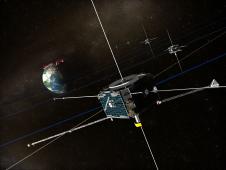The energy of the sun affects all life on Earth in ways we don’t even imagine

Humans have worshipped Sol for thousands of years
The original source of energy for all life on Earth, Sol has always ruled the lives and minds of human beings in many ways. The ruler of the daytime sky in ancient times and still today, Sol was worshipped by ancient humans of many cultures, and will always be a major force in the life of every human being on Earth. The Sumerians worshiped Utu as their sun god over two thousand years ago and modern humans worship the sun in their own way. We send spacecraft toward Sol, to study the lifecycle and physical and chemical characteristics of our sun, and determine everything we can about the sun.
Astronomy News – Hinode (Solar-B) is one spacecraft humans have sent out toward Sol in an attempt to delve deeper into the mysteries of the sun. A highly sophisticated observational satellite equipped with three solar telescopes, Hinode has recently revealed that the solar corona isn’t quite as static as solar scientists were first thinking. Hinode has surprised solar scientists of late with views of complex structures in the solar chromosphere, solar scientists use to think were static, but now believe to be dynamic structures flowing in time. This is making solar scientists rethink some of the previous ideas they had about the heating mechanisms and dynamics of the active solar corona.
Astronomers study the Sun continuously in an attempt to understand its mysteries
What questions will solar scientists working with Hinode try to answer next? They’ll be looking into why a hot corona exists above a cooler atmosphere? The origins and driving forces behind solar flares and the Sol’s magnetic field? The changes that the release of solar energy in its many forms has on interplanetary space in our solar system and life on Earth? The answers to these questions could be a key to eventually answering many of the questions the first stargazers and all humans have been asking for thousands of years. Solar scientists are also interested in knowing how magnetic changes near Sol’s surface effect the heliosphere, the outer atmosphere of Sol that extends beyond Pluto, and how severe changes in the heliosphere can cause satellites to malfunction and electrical blackouts on Earth.
Check out my latest astronomy site at http://astronomytonight.yolasite.com/.
Read about NASA’s Messenger spacecraft and its mission to Mercury
Have you heard about the recent meteorite that exploded near the Ural Mountains



